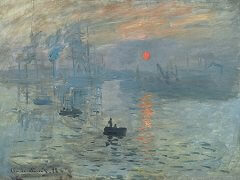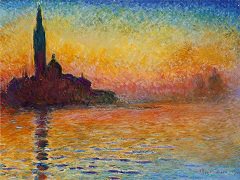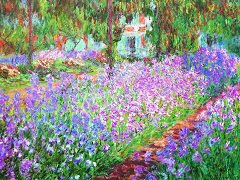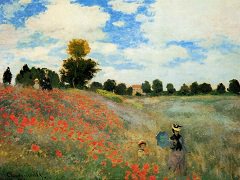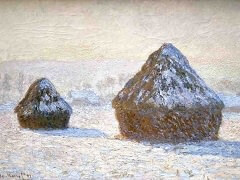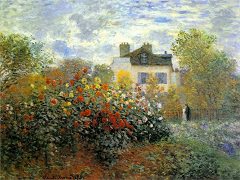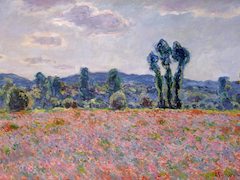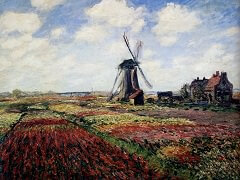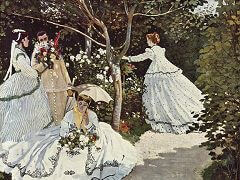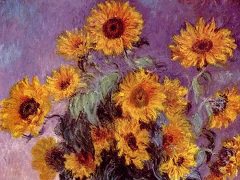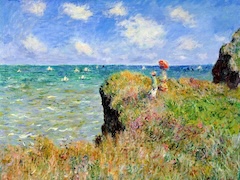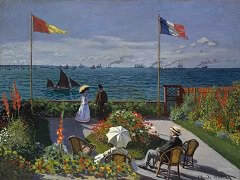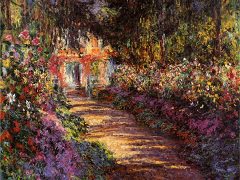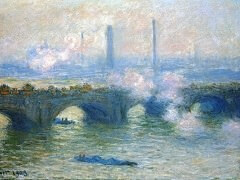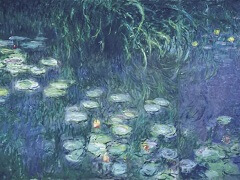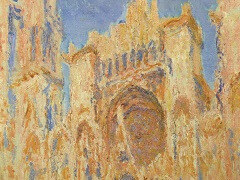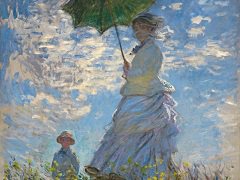Claude Monet Biography
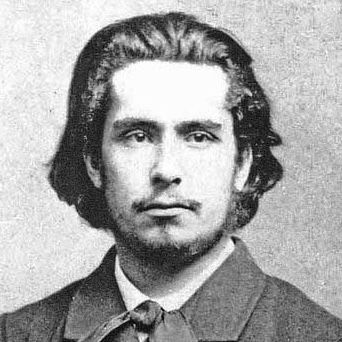
Recognized as the 'Father of Impressionism', Claude Monet (1840 - 1926) instigated one of the most important artistic movements in history, and his groundbreaking work continues to inspire the development of artists and artistic styles today.
How do artists represent and reflect the world they live in? The fact that the natural world is constantly changing makes depicting it a challenge when it comes to oil paintings, which are static and cannot show motion like movies do. To address this issue, the painter Claude Monet became one of the founders of the Impressionism art movement. Impressionism broke from convention and showed artists a new way to develop techniques to get to the heart of the reality in front of them.
Claude Monet was born in Paris, France on November 14, 1840. He began drawing as a boy when his family moved to Normandy. After becoming known for making caricatures of his teachers and people living in town, Monet met landscape artist Eugene Bodin, who taught him how to paint outside.
This led to Monet moving back to Paris, where he became a student at the Academie Suisse. Here, he immersed himself in the Barbizon school, which emphasized making preliminary sketches outside and then bringing the canvas back indoors to paint the natural world in a controlled environment.
Monet wasn't satisfied with this approach and began to paint outside, remaining on the scene from the beginning until the end instead of finishing the work inside of a studio. He was beginning to focus on capturing the evanescence of shifting, natural light, which required faster painting and a new attitude about art. Impressionism actually became possible thanks to manufacturers producing new ranges of paint color in tubes that were easy to transport and use outside rather than having to rely on a studio to mix and store the hues.
Impressionism
The term "Impressionism" now refers to a major art movement, but it was originally applied by critics of Monet to express derision for his painting style. Monet exhibited his painting Impression: Sunrise in 1874 with a group of fellow artists who were using the new techniques of painting quickly with vibrant colors and completing the work outside instead of interrupting the process and finishing the paintings in a building. Critics said these works were "mere impressions" and showed that the artists were poorly trained and unable to finish paintings according to contemporary ideas of composition.
Monet and his fellow Impressionists were keen to eliminate the color black from their palettes and encouraged this practice at every opportunity. It brought about a new color theory, which emphasized the presence of color, within shadows, and they worked to the rule that there was no black in nature, and therefore, it should not be included in their paintings. Monet is widely regarded as the forerunner of French Impressionism.
Key elements of impressionism include quick dabs of paint made with broken, hurried brushstrokes as the artist seeks to lay down in paint what the world looks like at that unique moment. Artists practicing Impressionism would load their paintbrushes instead of using thin amounts of color to represent shadows. These shadows were not depicted as strictly black or gray, but had elements of other colors because that is the reality the artists were facing.
Major Paintings
At times, the light Monet achieved in his paintings was almost the subject itself. The light enhanced the works and gave Monet's paintings a photographic quality, despite the "impression" of the subject of the piece. It was these impressions - rather than the subjects or themes - that established Monet as a revolutionary artist. Monet became increasingly interested in how our eyes truly perceive the natural world. To that end, he would create multiple paintings to record and reveal the process of perception as the natural scene's appearance changed throughout the day. Examples of these efforts include his paintings of Haystacks (1891), Waterloo Bridge (1903).
Fascinated by the effects of light, he made innovative use of color and brshstrokes to portray a fresh and original vision. His tireless investigation of light on a given subject is charted throughout his series paintings, most notably on those of Rouen Cathedral and Water Lilies in his Giverny Garden.
Along with the other Impressionists, Monet's aim in his painting was to capture reality and analyse the ever-changing nature of light and color. He recorded his surroundings faithfully, from the grime of a Paris railway station to the incandescent beauty of his later paintings based on the gardens he created at Giverny in northeastern France.
Influences
Monet's creativity never wavered despite a great amount of personal tragedy and financial instability throughout his life. His impact upon his contemporaries and modern artists alike is massive; he is said to have influenced artists as diverse as Pierre-Auguste Renoir and Jackson Pollock. But chief among them were Paul Cezanne, Edgar Degas and Vincent van Gogh.
Paul Cezanne
Cezanne (1839-1906) was a luminary of the post-Impressionism movement in France. He came to see color, forms and lines as one and the same in terms of how people perceive nature with their eyes. It can seem as if he is more constructing images than merely painting them, using bold, methodical jobs of paint and basing images on multiple angles or viewpoints.
Edgar Degas
Degas (1834-1917) is another contemporary of Monet and was his colleague during joint exhibitions during the 1870s. Degas worked to show the varying colors given to scenes as the light changed along with other Impressionists. His formal training and interest in Realism prompted Degas to refer to himself as an independent. He continued to begin work out of doors and then finish paintings inside based on his memories and preliminary sketches.
Vincent van Gogh
Another seminal artist who was influenced by Monet, van Gogh (1853-1890) employed unusual color schemes to the point of symbolism to get across his own emotions in oil paintings. With van Gogh, viewers get much more of an impression of the scene than how it technically appears. The artist's emotions and psychological state are revealed as well in his bold flurry of colors.
Monet died on December 5, 1926 in Giverny, France, leaving behind a substantial body of work that art aficionados still marvel at today. Shortly after Monet died, the French government installed his last water-lily series in specially constructed galleries at the Orangerie in Paris, where they remain today.
It's worth noting that later in his life, Monet wrote:
My only merit lies in having painted directly in front of nature, seeking to render my impressions before the most fleeting moments. "
The discoveries he made through his paintings illuminated nature for the rest us and secured his place in history as a founder of Impressionism.

